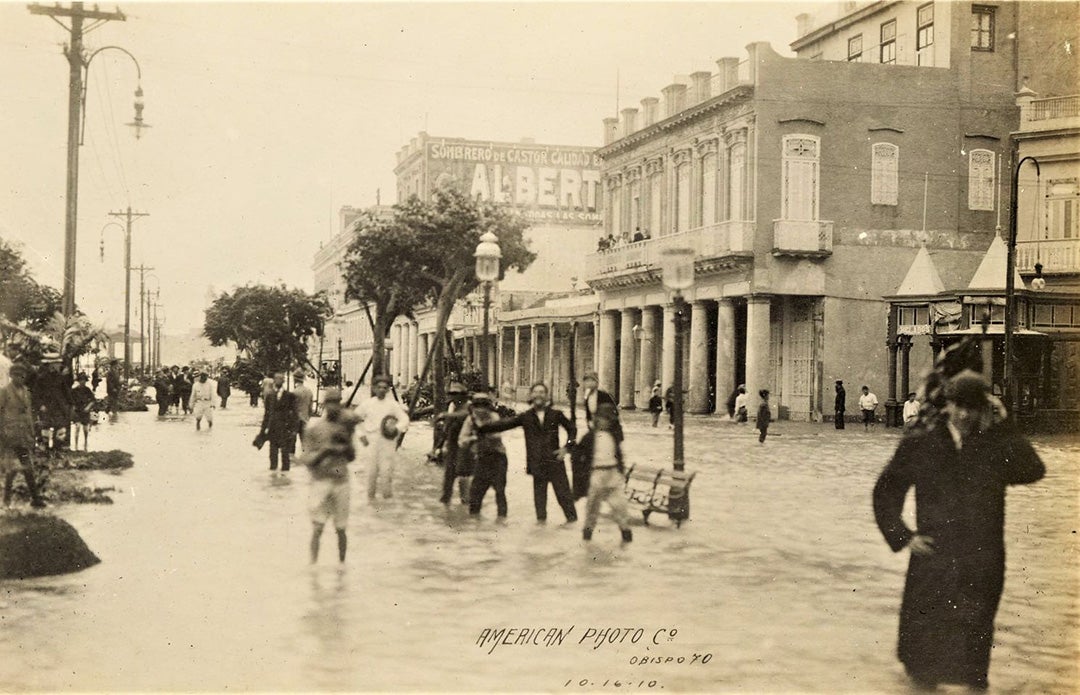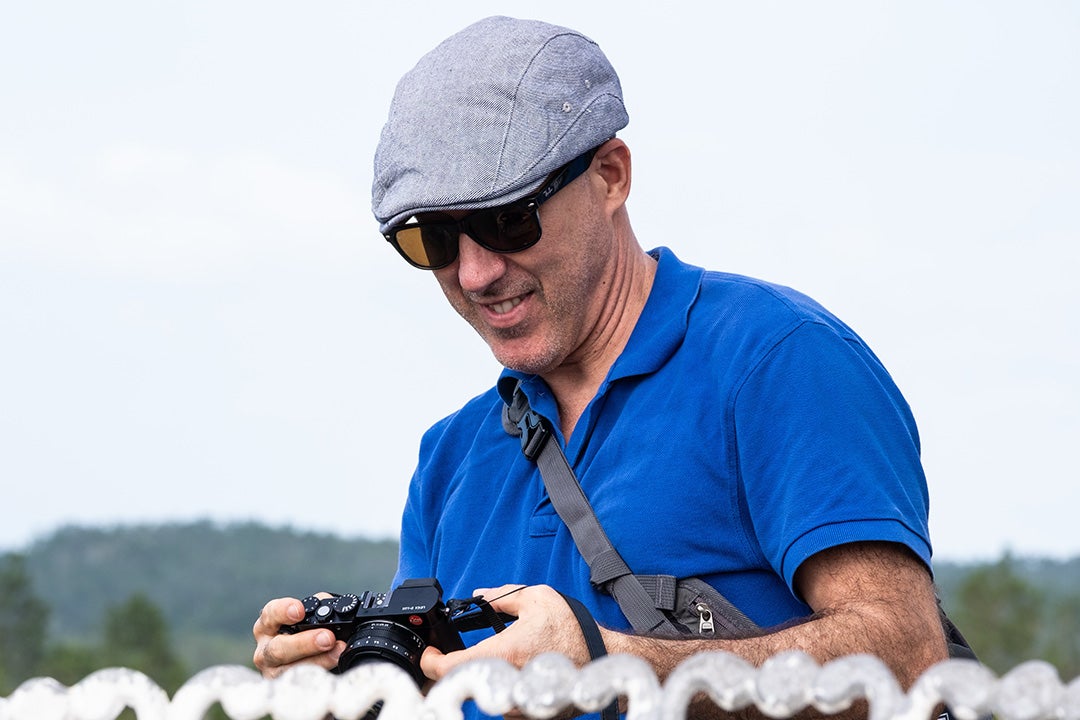
Before the doors opened for “La Furia del Viento,” a long line of Cuban and foreign patrons had already formed outside Fototeca de Cuba for the March 8 opening of the exhibition.
“The response from the people was beyond enthusiastic,” said Luis Duno-Gottberg, Rice University’s Lee Hage Jamail Professor in Latin American Studies and a co-curator of the exhibition who said the country’s preeminent meteorologist José Rubiera also attended the opening in Havana.
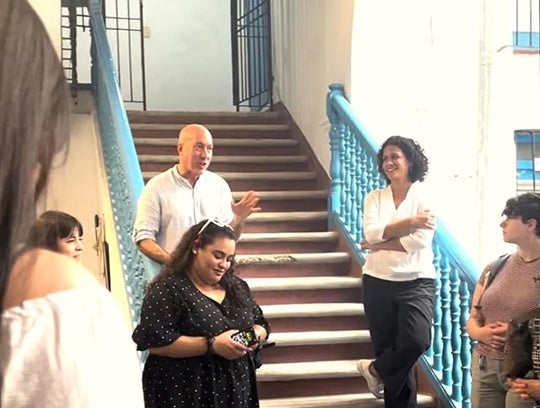
The exhibition, part of an ongoing project for Duno-Gottberg, was a result of meticulous research into the archives of the Fototeca de Cuba, the National Library of Cuba and other records in the United States and Spain. One especially productive source was the old, no longer published “Diario de Cuba.” Original prints not seen for decades were brought to light. The curators also worked with contemporary sources, receiving contributions from active and renowned photographers.
Featuring an array of artists ranging from Moisés Hernández to Manuel Almenares, the exhibition presented a diverse tapestry of Cuba’s encounters with natural disasters. Alongside traditional artwork, cinematic pieces such as “Ciclón” (Santiago Álvarez 1963), “Memorias del subdesarrollo” (Tomás Gutiérrez Alea 1968) and “Nos quedamos” (Armando Capó 2009) added additional layers of storytelling, providing fresh insights into the poetic dimensions of catastrophe. Notably, Samuel Feijóo, a prominent Cuban writer and folklorist, contributed his evocative imagery documenting the intersection of religious practices with cyclones. Presenting such a well-known ethnographer as a photographer informing the work of artists in the 1980s and 1990s was a revelation to the Cuban audience.
‘Gazing at disasters’
For Duno-Gottberg, the journey that culminated in “La Furia del Viento” began as a fusion of academic inquiry and pedagogical innovation. His involvement in the exhibition is just one facet of a broader exploration into the representation of natural disasters through the lens of photography across Latin America and the Caribbean.
Central to the project’s inception was the ambition to create a comprehensive platform that chronicles and geolocates visual materials related to natural disasters in the region, spanning hurricanes, volcanoes, earthquakes and floods.
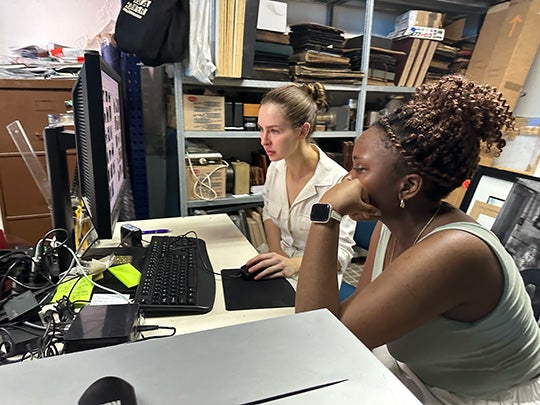
“That became a class, which I’ve been teaching for a few years, called ‘Gazing at Disasters,’” Duno-Gottberg said. “These initiatives then led to a collaboration with the Fondren Fellows program in which students participated in building the platform with the assistance of Rice’s Spacial Studies Lab and even doing archival work abroad.”
The project took root in Venezuela, Duno-Gottberg’s home country, where archival resources were readily accessible. Building upon this foundation, Cuba emerged as the next focal point. Three Fondren fellows joined Duno-Gottberg in navigating the sometimes difficult-to-access archives Cuba. He credited his long standing connections in Cuba cultivated over three decades in facilitating unprecedented access to archival treasures.
“The end result is that our students got to work on those archives, and the Cuban people got to see images that they’ve never seen,” Duno-Gottberg said, noting that the exhibit showcased more than 120 years of photography depicting earthquakes and hurricanes. “That was a big deal. Looking at those images, people responded emotionally, sharing stories of struggle and solidarity.”
Duno-Gottberg added that one psychotherapist even brought several of his patients to the exhibit to discuss trauma and resilience.
The project is a personal one for Duno-Gottberg, who only began to realize how personal it was once he started digging into the archives in Venezuela.
In 1967, a powerful earthquake shook Venezuela’s capital city of Caracas, leaving in its wake a trail of devastation and despair.
“I wasn’t aware of this until I started working on the topic,” Duno-Gottberg said, “but a little bit into the project, I realized members of my own family had perished in this event. Digging into the archive, I began to understand stories I had heard at home.”
The quake, so powerful it broke the needle straps of the pendulum seismometer at Cagigal Observatory, claimed hundreds of lives and forever changed the landscape of the city. Four towering apartment buildings crumbled under the force of nature, while countless others stood as silent witnesses to the tragedy.
But it was perhaps the catastrophic floods of 1999 that inflicted the most profound wounds upon Venezuela’s collective psyche.
“It completely altered the landscape,” Duno-Gottberg said. “Beaches I used to go surfing when I was a teenager were covered by rocks, pushed further into the ocean or erased. Imagine entire sections of a 9,000-foot mountain collapsing, burying entire towns and even changing the shoreline.”
Triggered by torrential rains, flash floods and mudslides, the deluge engulfed Los Corales, Cerro Grande, Tanaguarena and Carmen de Uria in Venezuela, killing tens of thousands of people. Some sources estimate 30,000 lives were lost during the catastrophe.
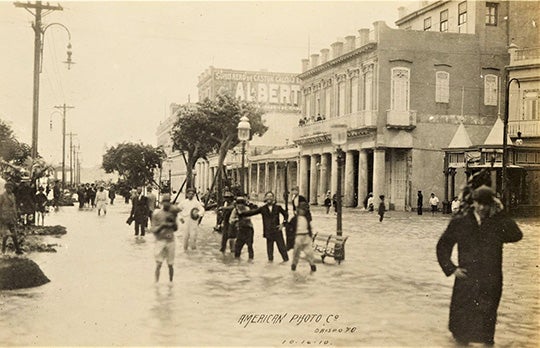
“Images from those two events still touch me when I see them,” Duno-Gottberg said, adding that they fortified his commitment to preserving the dignity and humanity of those affected by disasters.
“An important aspect of this project is that you never get desensitized, that you make every event specific and human, and you never get caught up in the shock of an image,” he said. “More importantly, those images also remind us that vulnerability is not a natural phenomena, it’s the result of social, historical and political factors. In the end, natural disasters are not natural.”
‘The flow of it’
Duno-Gottberg expressed that ultimately he wants the exhibition’s viewers to engage with photography’s complex relationship to reality.
"Photography’s supposedly indexical nature fools the eye and fools us by projecting that what they see in the picture is what happened,” he said, challenging the conventional narrative of photographic truth and urging the public to interrogate the cultural and political decisions that shape our understanding of tragic events. “Certain things are shown, others are not. For example, who experienced the violence of the event? How are they represented? Some people are granted the dignity of anonymity. Some are ‘helpless victims.’ Some are ‘heroes.’ Some are perpetrators of vandalic behavior. Some embody solidarity and selflessness. These things are often settled through the production of images.”
Through the exhibition and its accompanying catalog, Duno-Gottberg said the project serves as a repository of history, offering unprecedented access to the events that have shaped communities and nations, which underscores the project’s broader mission of education and awareness.
Duno-Gottberg went into this project with the idea of writing a book, expecting the archives in Cuba would help with a single chapter. Instead, given rich material and the enthusiasm generated by the research, it became a separate book.
“The flow of it has been beautiful,” he said, adding that the project’s momentum shows no signs of slowing down.
Plans are underway to explore the archives of Mexico and other countries with open repositories. Chile, Haiti and Brazil are all on Duno-Gottberg’s to-do list, offering fertile ground for further investigation into the intersection of photography, disaster and resilience.
“This is a multi-year process, but it has moved fairly quickly,” he said.
‘Useful in so many ways’
As the project continues to unfold, it has forged unexpected connections between scholarly fields, illuminating new pathways for interdisciplinary collaboration. Rice President Reginald DesRoches and Leonardo Duenas-Osorio, professor of civil and environmental engineering, have participated in the conversation surrounding what Duno-Gottberg calls “the visuality of disasters.”
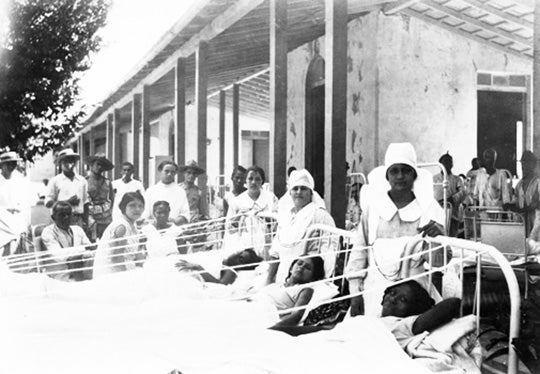
Duno-Gottberg also sought advice from Rice Ph.D. candidate Marc-Ansy Laguerre, whose research focused on retrofitting structures to mitigate earthquake hazards in Haiti. For Laguerre, Duno-Gottberg’s presence on his thesis committee proved instrumental in navigating the complex social dynamics of earthquake impact.
“Luis’ expertise and interest in the social impact of earthquakes was very helpful in understanding the social impact of earthquakes in Haiti, which is an important part of my thesis,” Laguerre said.
Central to Laguerre’s work is the integration of photographic evidence into his analysis of structural failures in natural disasters.
“The photos were instrumental in my research as they provided examples of different types of structural failures due to earthquakes,” Laguerre said.
While the photographs from Cuba may not have been included in his thesis, they served as poignant reminders of the universal challenges faced by communities grappling with seismic upheaval.
Duno-Gottberg envisions a future when these photographic archives serve as a rich resource for historians, planners, communities and engineers like Laguerre who seek to glean technical insights from the visual record of disasters.
“There may be potential for further research with this archive,” he said, adding that he would love to collaborate with more engineering students at Rice to develop a way to analyze photographic renderings and shed light on the structural vulnerabilities exposed by natural disasters. “This could be useful in so many ways.”
For Laguerre, the next step is clear: to compile these photographs into a comprehensive, searchable database complete with geospatial mapping.
“This would not only aid in academic research but also serve as a practical tool for anyone interested in this topic,” Laguerre said. “It would serve an educational purpose by helping people learn from past disasters.”
By harnessing the power of visual storytelling, Laguerre and Duno-Gottberg said they hope to empower communities to learn from the past and build a more resilient future.
“These pictures capture a kind of writing,” Duno-Gottberg said. “The traces of the disaster constitute a code we can read in technical, historical, cultural and social terms. You can interpret these images to understand what happened and how a particular structure collapsed. These images are also a repository of memory revealing social and historical origins of what we call equivocally natural disasters.”
To learn more about Duno-Gottberg’s continued work, click here.

